Asia
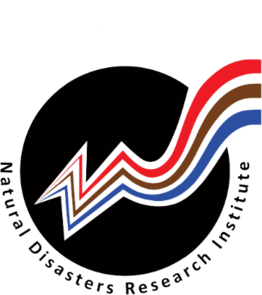 |
Natural Disasters Research Institute (NDRI)Tehran |
|
In the aftermath of the disastrous Gilan and Zanjan earthquake in 1990, the Technical Capacity Mobilization Office of Iran was established for the reconstruction of the affected areas in cooperation with the United Nations Development Programme (UNDP) and the United Nations Human Settlements Programme (UN-Habitat) under the supervision of the Housing Foundation of Islamic Revolution. By ending the World Bank's loan and approving a new statute in 1993, the Centre for Natural Disasters Mitigation Studies of Iran was established and continued its activities until 1998. In 1998, the Centre was renamed to Natural Disasters Research and Study Centre. As a response to a national need in conducting research on natural disasters, the Centre's statute was revised in 2003. Following the permit issued by the Ministry of Science, Research and Technology and approved by the Higher Education Development Council, the Centre was transformed to the Natural Disasters Research Institute to address these goals: |
|
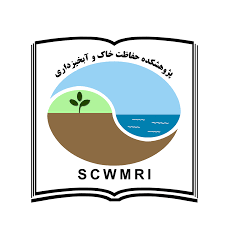 |
Soil Conservation and Watershed Management Research Institute (SCWMRI)Tehran |
|
The Ministry of Jahad-Agriculture, deputy of Research and Education, Soil Conservation and Watershed Management Research Institute (SCWMRI) with the main mandate of research on integrated watershed management is founded in 1993. The main field of activity is to conduct research in soil erosion and sediment yield, soil conservation, watershed management, flood management and exploitation, river engineering, coastal protection, hydrology and water resources development, aquifer management, climate change and agricultural drought impacts management. The SCWMRI proudly recognized as the focal institute in watershed management in Iran, enjoys having cooperation of 160 academic and scientific staff, researchers, professional engineers and qualified technicians carrying out applied researches in the above-mentioned fields. There are 26 provincial divisions and 37 research stations conducting pilot projects across the country. Research Objectives
[detail] --> |
|
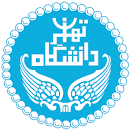 |
College of Agriculture and Natural Resources-Environmental changes Institute
|
|
Being the best in Iran, the University of Tehran has been ranked as one of the top universities in Asia.The foundation of the College of Agriculture & Natural Resources (UTCAN), goes back to the year 1900, when it was first established as "School of Agriculture". 120 years of education, research and policy-making, has turned UTCAN into a pioneering and leading focal point in Iran and also in Asia. UTCAN is honored to have former Minister of Agriculture, Minister of Economy, Acting-Minister of Science, Parliament member, President of the University of Tehran and other great leaders among its faculty members. UTCAN, with more than 240 eminent faculty members. 4500 Students are currently studying in 148 majors and specializations in 17 departments. Many regions of the world are increasingly facing challenges when it comes to management of resources and environmental changes and finding solutions for those related problems. The nature of these challenges differs from one location to another. Environmental changes which result in floods and droughts as well as long term impacts of climate change on different elements of environment can cause significant economic losses to various regions and nations and also increase the risk of disasters. We plan to establish a specific institute on disaster risk management and environmental changes in 2019, but by then all activities are at UTCAN level.
To produce technical publications and other media items related to the activities [detail] --> |
|
 |
Kobe City College of NursingDisaster Nursing and Global Nursing SectionKobe |
| Outline The Kobe City University of Nursing opened in April 1996, and the Kobe City University of Nursing Graduate School opened in April 2000, both to train nursing professionals with advanced clinical skills and educators, researchers, and administrators, and to further promote nursing research. The School of Nursing encompasses the areas of basic nursing, disaster nursing, and global nursing. The undergraduate curriculum includes courses such as "Disaster Prevention" and "Disaster Nursing I & II." The Graduate School of Nursing offers a "Certified Nursing Specialist Course in Disaster Nursing" within its master's program and a "Global Health and Disaster Nursing" course as part of its doctoral program. Our research interest primarily lies in the domain of Disaster Nursing and Global Nursing, pivotal components within the Fundamental Nursing Science Field. We endeavor to cultivate a multifaceted approach in our research and educational programs, focusing on disasters and global health challenges to induce transformative advancements in nursing practices. We are devoted to developing adept human resources who can proficiently coordinate and collaborate with a spectrum of professionals and organizations. Our aim is to foster the provision of superior care, grounded in clinical judgment and specialized expertise, integrating both care and cure elements seamlessly. We amalgamate findings from our comprehensive research to implement paramount changes in nursing practices, ensuring adaptability and resilience in diverse healthcare environments in the community in changing risk landscape. We utilize our professional capabilities with technology to undertake a pivotal role for care providers, ensuring optimal preparedness and response as first responder to people. The Center for Nursing Care Development in Diversity has been a beacon of communal contribution, particularly in Nishi Ward, Kobe City, exemplified by our ongoing efforts in reconstruction post the Great Hanshin-Awaji Earthquake. [detail] --> |
|
 |
Department of Climate Change, Ministry of
|
| Outline Established under the Ministry of Natural Resources and Environment, the Department of Climate Change acts as the secretariat for climate change policies and management in the entire country. It is responsible for implementing directions, policies, resolutions, orders, strategies, laws, and legislations of Lao PDR's government on national climate change activities. It further cooperates with different levels of government on researching and improving policies, strategies, programmes, work plans, and legislations related with natural disaster and climate change management.
[detail] -->
|
|
 |
Institute of Noise and Vibration, Universiti Teknologi Malaysia (UTM)Johor |
| Outline The Institute of Noise & Vibration is a centre of excellence of Universiti Teknologi Malaysia established in 1992 offering technical services and industrial research of the University in noise & vibration and seismic engineering to industry. It is recognised as a referral centre by the industry and government agencies for noise & vibration and seismic engineering in the country. Personnel of the Institute are leading authorities in this specialised field in the region. The Institute is a self financing autonomous business unit of the University. The Institute consists of highly experienced academic faculty members and full time consulting professionals undertaking all technical services of the Institute. Consulting projects and other assignments are otien secured on a referral basis from the industry and government agencies. We are the preferred technical partners in noise & vibration for GLCs, MNCs and industry leaders in oil & gas, power generation, infrastructure development and construction. Our design and investigations are supported by extensive and comprehensive use of computer modeling and analysis. We put into practice our strong belief that there must be an engineering basis for design and problem solving ‐ so that key features and/or root causes could be identified for cost effective solutions and remedial solutions could be developed. The formulation of such solutions and design options can only be undertaken when supported by comprehensive measurements, analytical and computational analysis. [detail] --> |
|
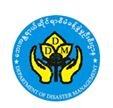 |
Department of Disaster Management, Min. of Social Welfare, Relief and Settlement, Republic of the Union of MyanmarNay Pyi Taw |
| Outline Relief and Resettlement Department had emerged in Myanmar since the pre-independence .1945, a center for social and rehabilitation has emerged in the Office of the Director load desertion collecting loans and resettlement issues. 1948 When independence of Education, Ministry of Social and Rehabilitation was originally formed as operations proceed. Education on (1-11-1951) Relief and re-formed as the Ministry of placement loan collection, deserters Insurgency community housing forsaken supplies to rescue people, destroyed homes and placed back in service. In 1972, rescue, Resettlement and the Ministry of National Unity formed as canceled. Relief and Resettlement Department under the Ministry of Social Welfare Department. Relief and Resettlement Department, Emergency Management Center (EOC), Disaster Management Training Center (DMTC), Region / State Department's Office (15) Office and the Office of the District Officer's Office (29) activities. On 31.1.2018 the name of Relief and Resettlement Department, the Department of Disaster Management name was transformed. [detail] --> |
|
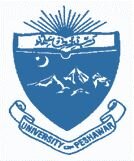 |
University of PeshawarPeshawar |
|
Outline The University of Peshawar, as a mother educational institution of Khyber Pakhtunkhwa is an outcome of the dream of the father of the nation and was created as the first ever University after independence. It is vigorously working with its full zeal and spirit, truly serving and sacred cause of education altogether. The University of Peshawar founded in 1950, is the fulfillment of a dream, which had long remained unrealized. The first seeds of the University may be said to have been sown by Sir Sahibzada Abdul Qayyum Khan, who boldly conceived the idea and founded Islamia College - (The Dar-ul-ulum Islamia) in 1913 at the first out-post of civilization, almost at the mouth of the historic Khyber Pass. The founder of Pakistan, Quaid-e-Azam Mohammad Ali Jinnah, who perhaps saw the strategic role of Peshawar in his mind, on April the 12th, 1948, while addressing the students and teachers of the Islamia Collage Peshawar The University of Peshawar, being a mother Institution of the Khyber Pakhtunkhwa is not only catering for the academic needs of Peshawar but also of the whole province and Federally Administered Tribal Areas (FATA). The highly qualified and trained faculty, student friendly and supportive administration, modern curricula, conductive academic environment and excellent infrastructure are the hallmarks of the University. Its role in political, industrial and government leadership is recognized. The University has an over whelming contribution in bringing positive changes in the society. [detail] --> |
|
Institute of Catastrophe Risk ManagementNanyang Technological UniversityNanyang Avenue |
|
| Outline The Institute of Catastrophe Risk Management (ICRM) was officially launched on 21 January 2010 and aims to be the first multi-disciplinary and leading catastrophe risk management research institute of its kind in Asia. ICRM has its focus on Asia because Asia has traditionally suffered the most in terms of human fatalities and economic loss from natural catastrophes, while being the least prepared region of the world to mitigate such risks. The Institute aims to help the regional and international communities to better understand the characteristics of risks related to natural disasters such as earthquakes, tsunamis, volcanic eruptions, typhoons, floods, droughts, as well as non-traditional risks which may include infectious diseases and terrorism. Through ICRM, NTU faculty and researchers will work on integrated risk assessment and management of natural hazards as well as man-made threats. Such work will be conducted in collaboration with research organisations worldwide in the risk management domain as well as insurers, reinsurers and risk modellers from the finance and (re)insurance industries and associations. ICRM aims to develop Asian catastrophe risk models and to build up industry benchmarks and indices which reflect the uniqueness of Asian catastrophe risks. ICRM is envisioned to be a key player in Singapore's effort to further strengthen its position as a major international finance hub, especially in the (re)insurance areas. The models and tools developed by ICRM will allow governments, public organisations and the industry to analyse potential losses, and so develop risk-management strategies. Decision-makers in Asia in particular will be able to utilise such tools to identify vulnerabilities, prepare for a range of possibilities and allocate resources. ICRM will undertake the state-of-the-art multi-disciplinary research work which leads to better understanding, communicating and managing of major disasters, both natural and non-traditional, and thereby provides major positive impacts on the society. [detail] --> |
|






